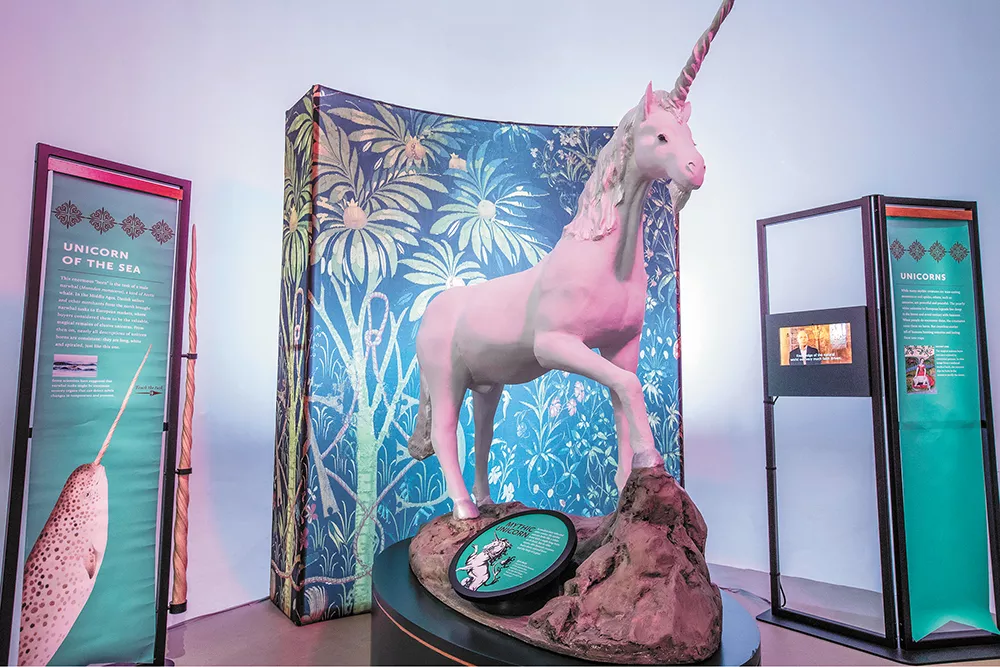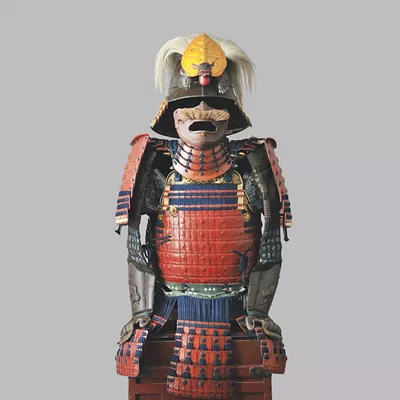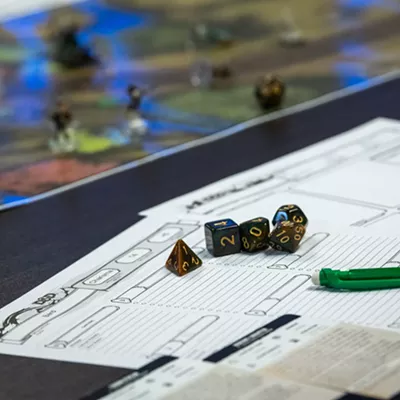Imagine living one, two or even three centuries ago, and stumbling upon the enormous, preserved bones of a wooly mammoth, a winged dinosaur fossil or the remains of another strange prehistoric animal.
Without an educated explanation, wouldn't it make sense, then, to believe you'd come across something otherworldly? A massive mammoth rib standing in for part of a fallen giant? A fossilized dinosaur perhaps inspiring the lore of fire-breathing dragons, and elusive creatures of the deep sea spurring fear-inducing tales of krakens, mermaids and other monsters?
A new traveling exhibit at the Northwest Museum of Arts & Culture uses paleontological and anthropological evidence to explore how the stories of such legendary creatures likely originated and endured in cultures around the world.
"It's just the way that people tried to make sense of the world when they looked at something like this," says Freya Liggett, curator of history for the MAC.
From the American Museum of Natural History in New York, Giants, Dragons & Unicorns: The World of Mythic Creatures features scale models, fossil casts, interactive displays, artwork and other objects to explain the fascinating historical origins of these storied beasts.
The exhibit features four main sections: sea monsters, mermaids, dragons and one combining giants, griffins and unicorns. Highlights include a recreation of the "feegee mermaid," a hoax created by joining the remains of a monkey with a fish that was widely exhibited as a P.T. Barnum sideshow, along with a real narwhal tusk, believed to have inspired the existence of rare and powerful unicorns.
To coincide with Giants, Dragons & Unicorns, the MAC curated its own exhibit on famous legends and fairytale creatures significant to the Inland Northwest. Northwest Legends highlights the stories of American Indian trickster Coyote, along with another beloved Northwest beast: Sasquatch. Trolls and fairies, stories of which came to the area with Scandinavian immigrants, explains Liggett, are also explored in Northwest Legends, a highly interactive, kid-friendly exhibit. Both exhibits are on display through Sept. 2.
Liggett, who says her favorite mythical creature is, hands-down, Sasquatch, hopes visitors appreciate the significance of getting to see objects from the Museum of Natural History here in Spokane.
"Both for visitors and museum professionals, it's one of those places we all know of, and a pretty special place to visit, so to have [an exhibit] from them, I'm very excited to see it come here."
Considering the continued cultural presence of mythical creatures — particularly dragons and their ilk — in television, literature and film, the exhibit's explanations of their origins dating back thousands of years should also feel relevant to visitors. Even though we've debunked their existence in the time since, many continue to be fascinated by their magical potential.
Museum programs held in conjunction with the exhibit include a special July 18 presentation ($10) with Dr. Jeff Meldrum, professor of anatomy and anthropology at Idaho State University, on his Sasquatch research. Meldrum has a collection of more than 300 footprint casts attributed to the storied cryptid.
"I've seen him present before, and it's a presentation that is really, if you are on the fence, it can take your view of Sasquatch as fringe science and present it in a way that has really solid history and work in the field of anthropology," Liggett says. ♦
Giants, Dragons & Unicorns: The World of Mythic Creatures • July 5-Sept. 2; Tue-Sun from 11 am-5 pm • $5-$10 admission • Northwest Museum of Arts & Culture • 2316 W. First • northwestmuseum.org • 456-3931























